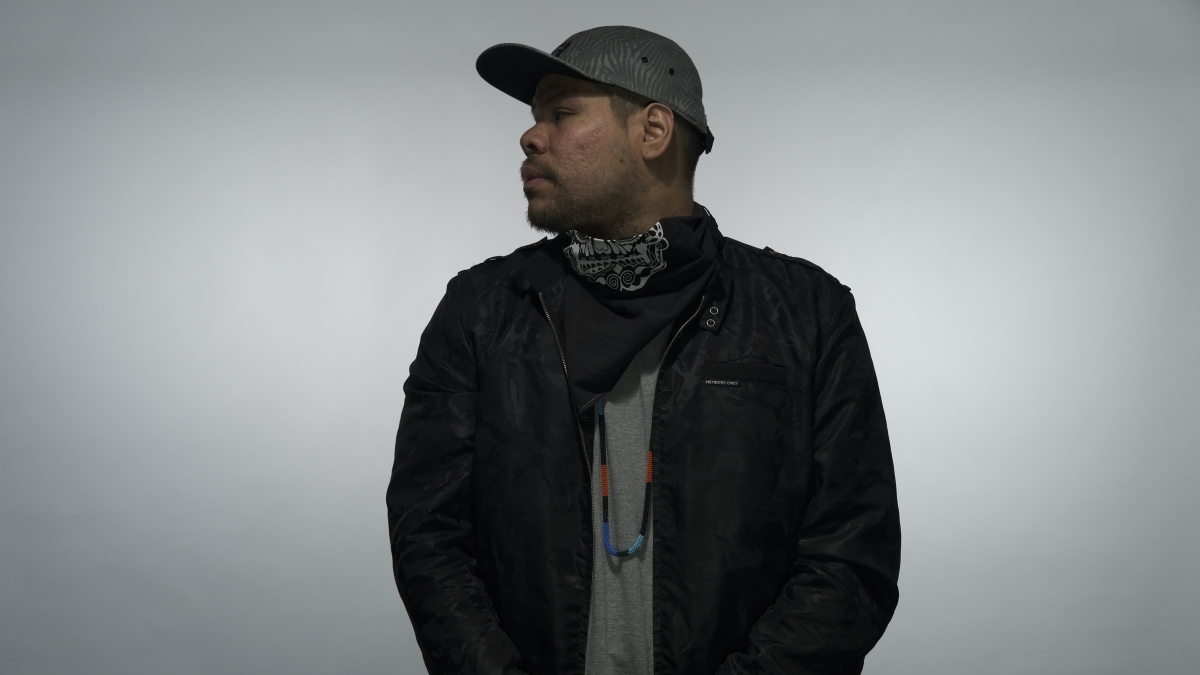Indigenous Culture Week emphasizes unification

Interdisciplinary artist Sacramento Knoxx will lead a live performance and an interactive workshop as part of Indigenous Culture Week at ASU.
There’s something new this year for Indigenous Culture Week.
It’s the word “Indigenous.”
Previously known as Native American Culture Week, and before that, American Indian Culture Week, the new name can be accredited to the advocacy and hard work of current Indigenous students.
“We’re unpacking this term ‘Indigenous’ and sharing it with our communities,” said Lourdes Pereira (Hia-Ced O’odham and Yoeme), an undergraduate student double-majoring in American Indian studies and justice studies, who works at the ASU Library’s Labriola National American Indian Data Center. “It’s not a new term, but it’s still something people are learning how to use. It’s an international term.”
Indigenous Culture Week events are happening April 2–11 across all campuses at Arizona State University, located on the ancestral homeland of the O’odham and Piipaash people.
It’s an opportunity to celebrate Indigenous people and promote Indigenous voices.
Voices like Sacramento Knoxx, an interdisciplinary artist from Detroit, whose “versatile background with different forms of music allows him to blend traditional and contemporary styles creating dynamic storytelling experiences with live music performances, dancing and video projections that take audiences on a participatory journey and a creative experience.”
Knoxx will be leading two events for Indigenous Culture Week. Sponsored by the Labriola Center, the RED INK Indigenous Initiative and the Department of English, Knoxx’s interactive workshop on April 6 will focus on creating music and lyrics from patterns and structures of sound. He will present a virtual music performance on April 7.
Other events include a pride run, a virtual walk-through experience of the American Indian Boarding School exhibition at the Heard Museum, a talk on unresolved trauma and a screening of the film “Sisters Rising,” the story of six Indigenous women fighting for their personal and tribal sovereignty.
Pereira says the push for the term “Indigenous” came out of a desire to communicate greater inclusion and a more deeply rooted connection to the land and to each other — an idea threaded throughout the Indigenous Culture Week Library Guide, created by Pereira and fellow student workers at the Labriola Center, including undergraduate students Elizabeth Quiroga (Tohono ‘O’odham), majoring in social justice and human rights with a minor in American Indian studies, and Mia Johnson (Navajo), majoring in applied computing.
The library guide is aimed at informing Indigenous and non-Indigenous students alike about all the resources available to them at ASU, and it offers a historical look at the culture week celebration.
It is also an attempt at examining the language surrounding Indigenous people – an idea conveyed visually through a gallery of promotional posters of past culture weeks.
“We need to think about our words more carefully and what we’re advocating for,” said Quiroga, who identifies with the term “Indigenous” rather than “Native American.”
“I feel like part of the issue in America is being focused on our own issues, individualizing all of our problems, but the issues we face here in America as Indigenous people, recognized or unrecognized, these are the issues being faced across the world,” Quiroga said.
Johnson offers an important reminder that Indigenous issues are not just historical — they are current.
“We’re not extinct. In classes, I’ve heard instructors talk about us as if we’re not around anymore,” Johnson said. “The O’odham and the Navajo – this is not just a historical story. These are contemporary issues — legal issues and social issues.”
To learn more about Indigenous Culture Week, visit the ASU students’ library guide and check out the week’s calendar of events.

